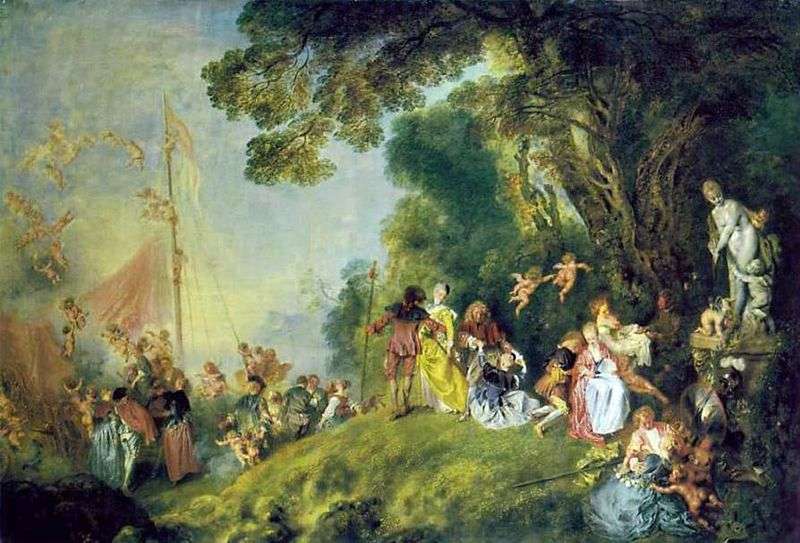
Painting of the French artist Antoine Watteau “Arrival on the island of Kiefer”. The size of the painting is 129 x 194 cm, canvas, oil. There is another, very similar picture of Watteau’s “Pilgrimage to the island of Kiefer,” which was created a year earlier, is now kept in the Louvre.
Green trees, plump cupids, loving couples, gorgeous silk dresses give a rare grace to the gallant scenes of this painting. Decorated with garlands, the statue of Venus with Cupid means that the idyllic world depicted here is associated with the search for love.
Although there are no erotic episodes in the film, it is endowed with undoubted sensuality. But, as Watteau often does, the charming frivolity of the picture is overshadowed by a touch of melancholy – the female figure in the center looks regretfully back, as if hinting at the transience of pleasure.
For the painting “Pilgrimage to the island of Kieferu” Watteau was admitted to the French Academy. This picturesque elegy Watteau is not built on a collision, action, but only on subtle shades of mood, a general poetic and emotional atmosphere.
The composition of the paintings “Arrival on the island of Kiefer” and “Pilgrimage to the island of Kiefer” is devoid of stability – the heroes that groups rush into the interior of the picture, then diverge in pairs, then suddenly turn to the viewer with gestures or gaze.
Characters seem to obey “visible” music – waves of rising and falling lines that unite the whole procession, almost dance moves of couples, pauses, alternating color spots create a sense of audible melody. Watteau was the creator and most prominent representative of the idyllic genre of gallant festivities typical of the Rococo style.
The artist invariably admired the works of Rubens, which had a decisive influence on his work. The refinement and grace of Watteau can be considered purely French qualities of his art.
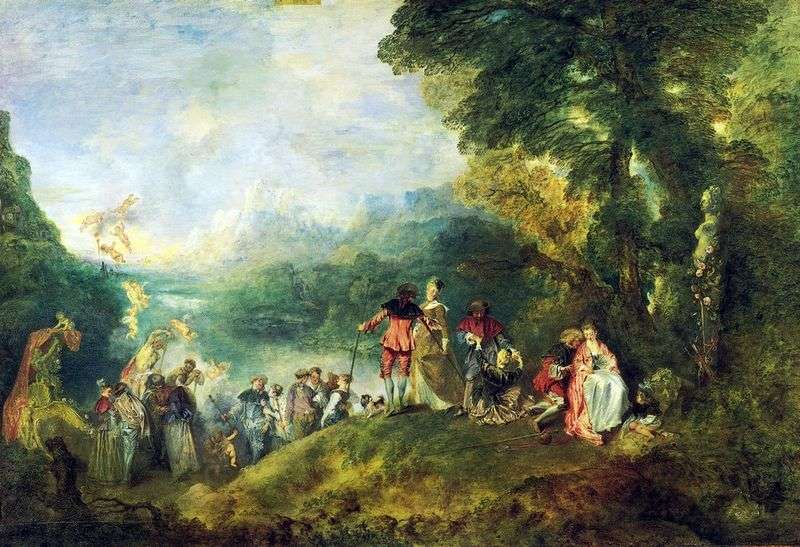 Pilgrimage to the island of Kiefer by Jean Antoine Watteau
Pilgrimage to the island of Kiefer by Jean Antoine Watteau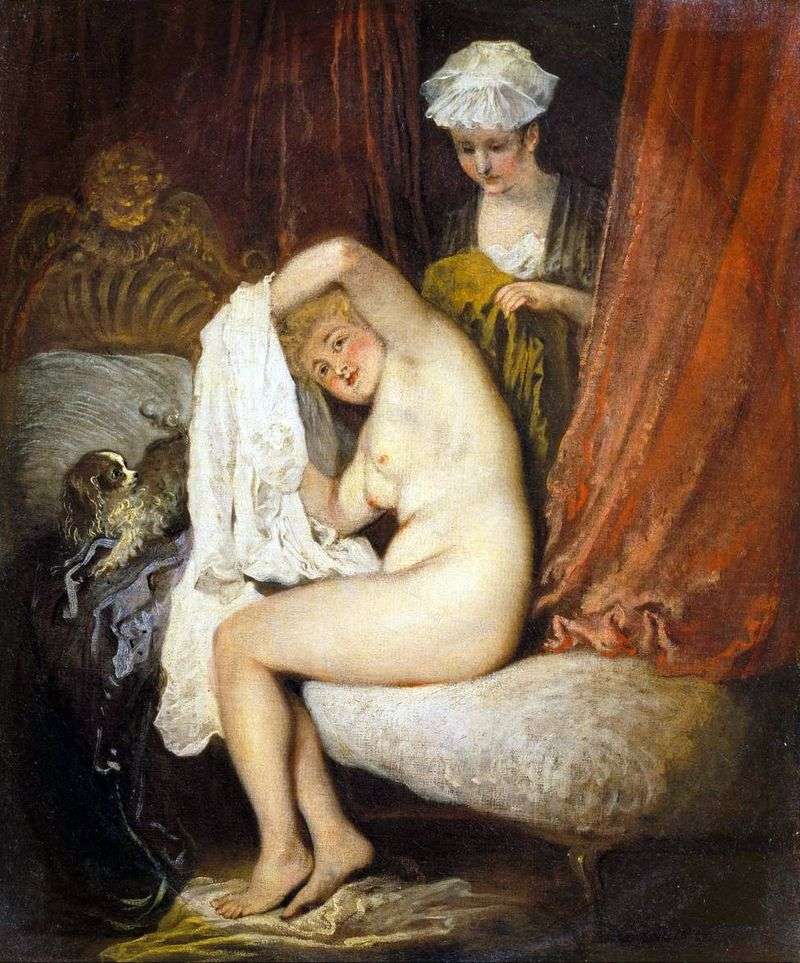 Dressing by Jean Antoine Watteau
Dressing by Jean Antoine Watteau Scene in the Italian Theater by Jean Antoine Watteau
Scene in the Italian Theater by Jean Antoine Watteau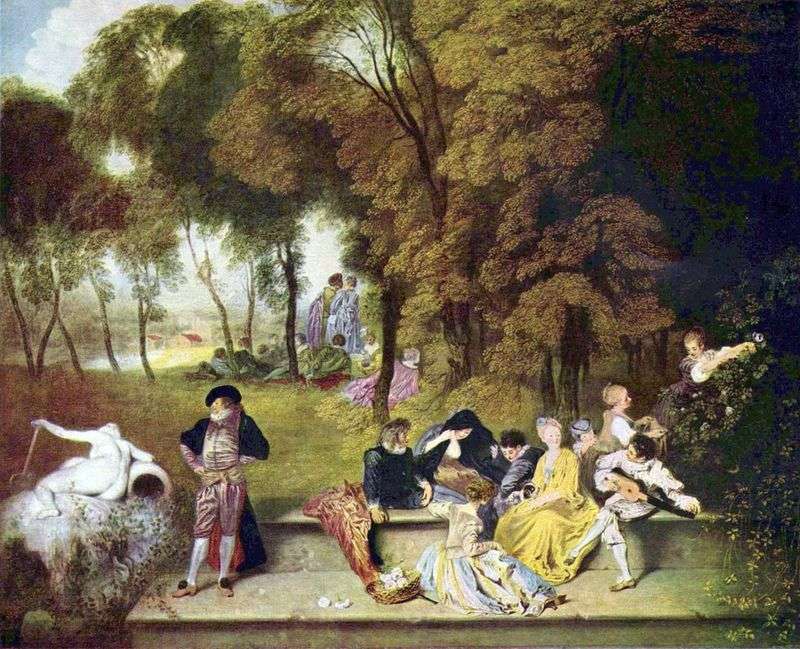 A company in the bosom of nature by Jean Antoine Watteau
A company in the bosom of nature by Jean Antoine Watteau Dance by Jean Antoine Watteau
Dance by Jean Antoine Watteau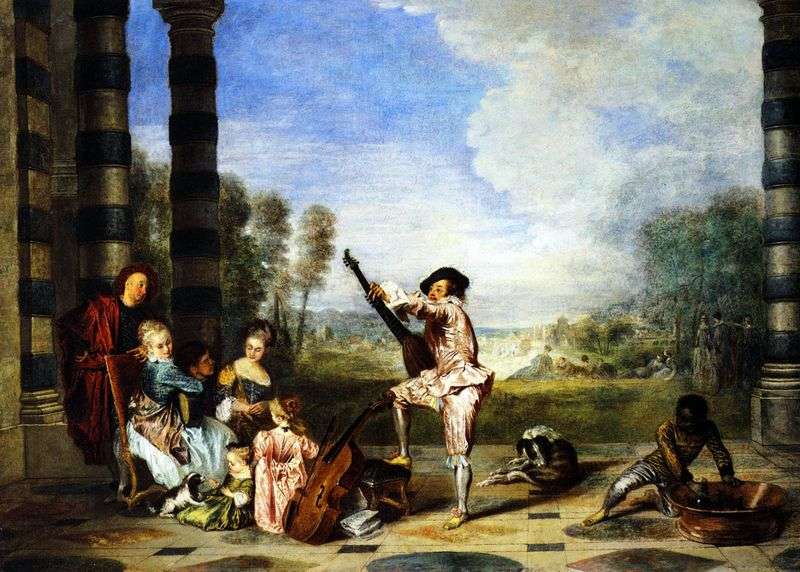 Joy of life by Jean Antoine Watteau
Joy of life by Jean Antoine Watteau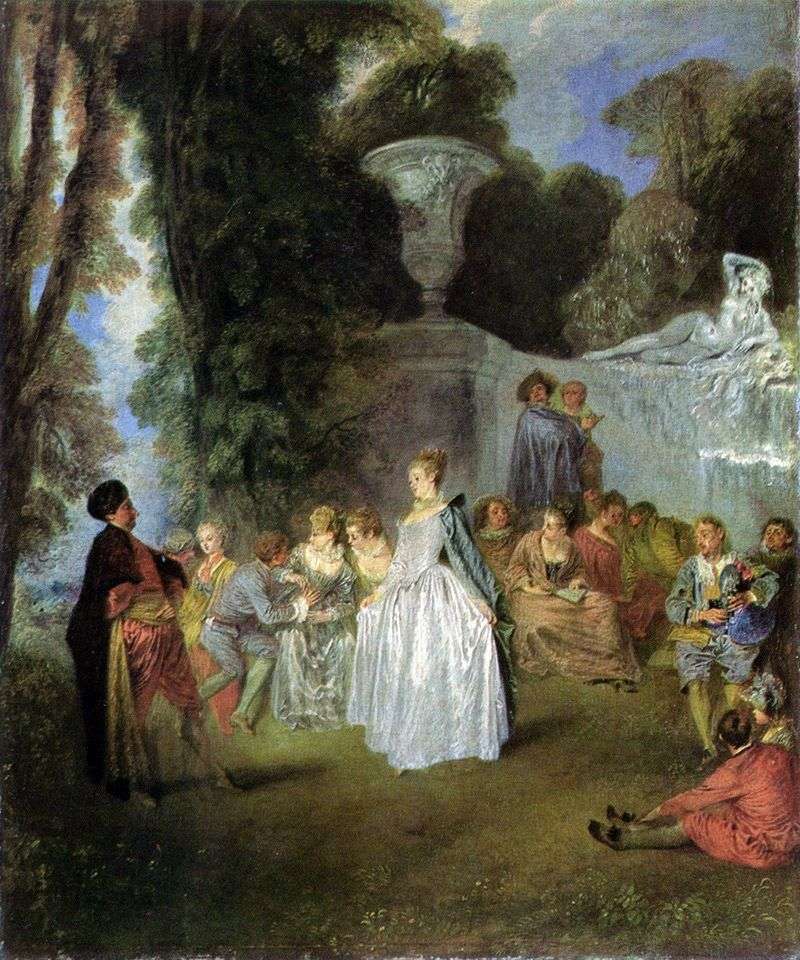 Venetian Feast by Jean Antoine Watteau
Venetian Feast by Jean Antoine Watteau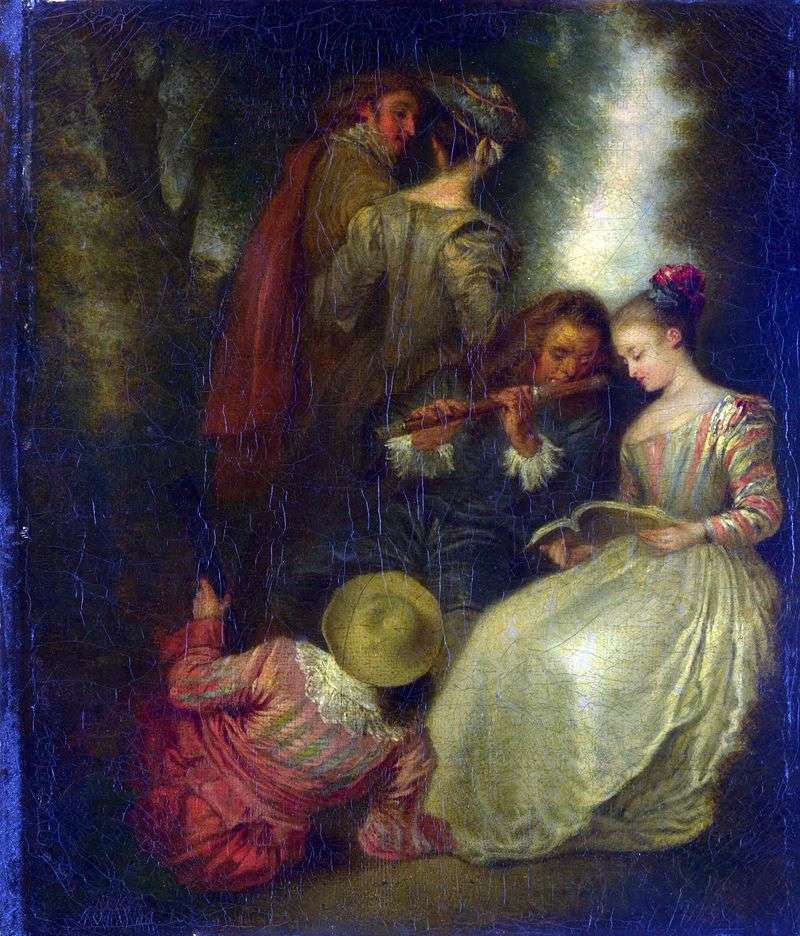 Full harmony by Jean Antoine Watteau
Full harmony by Jean Antoine Watteau